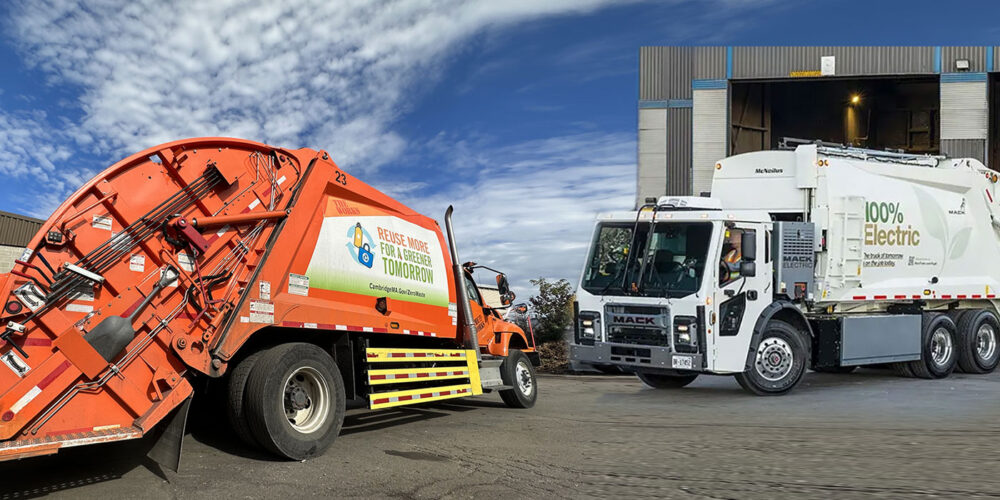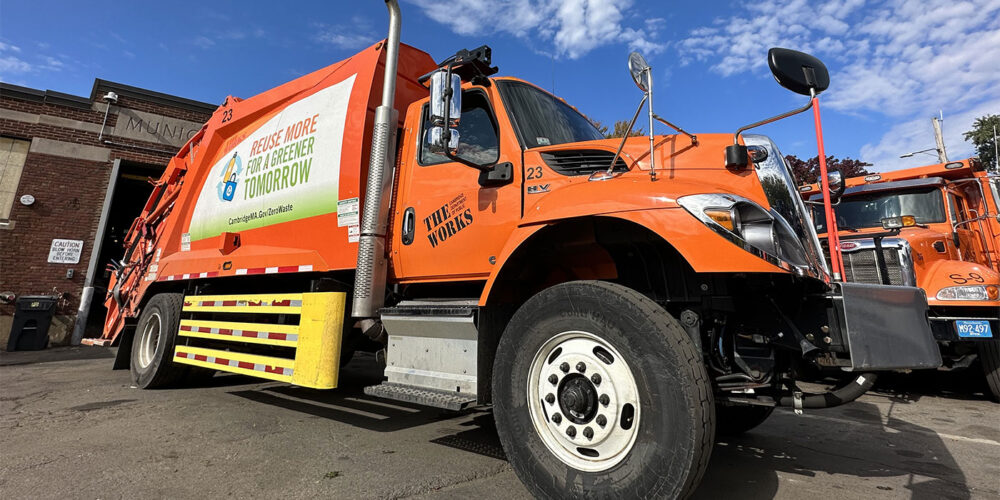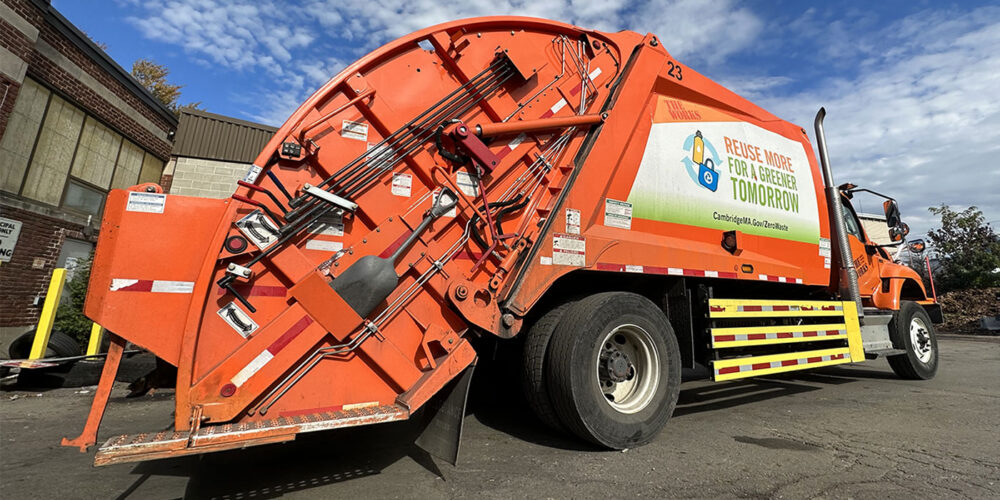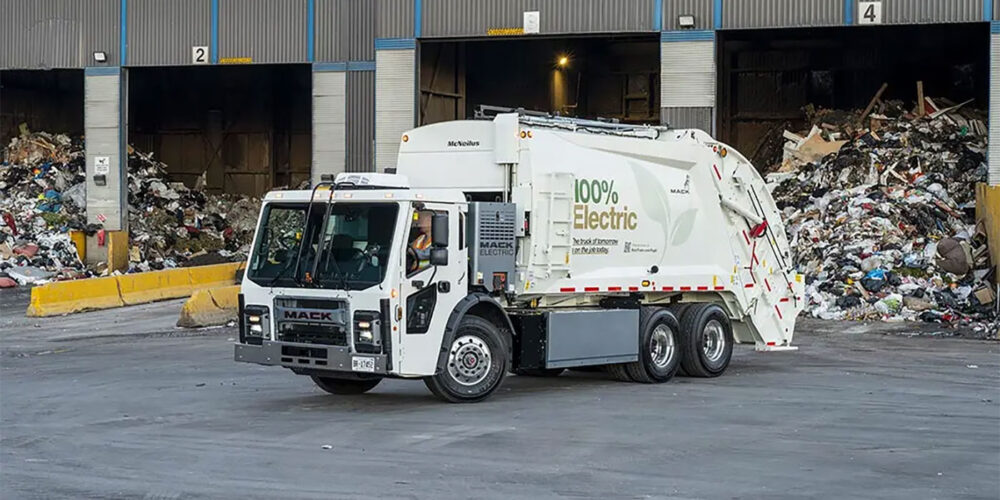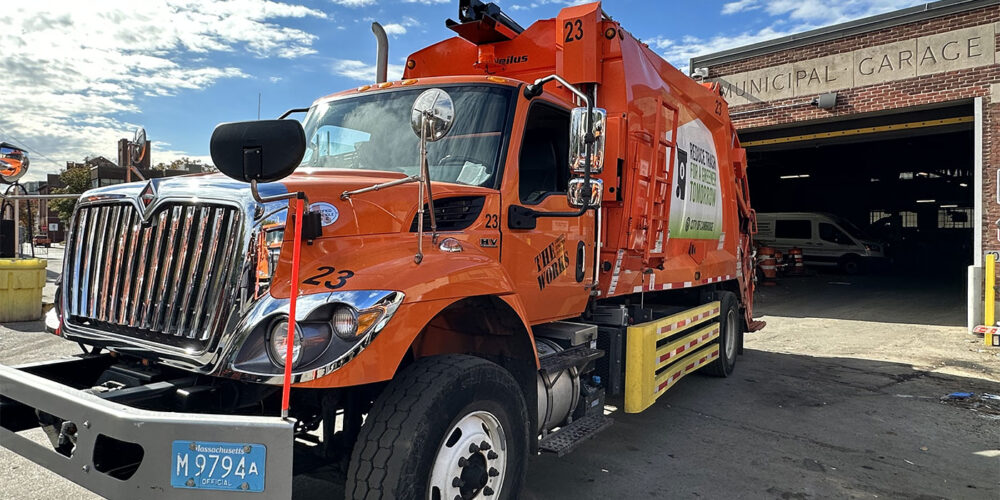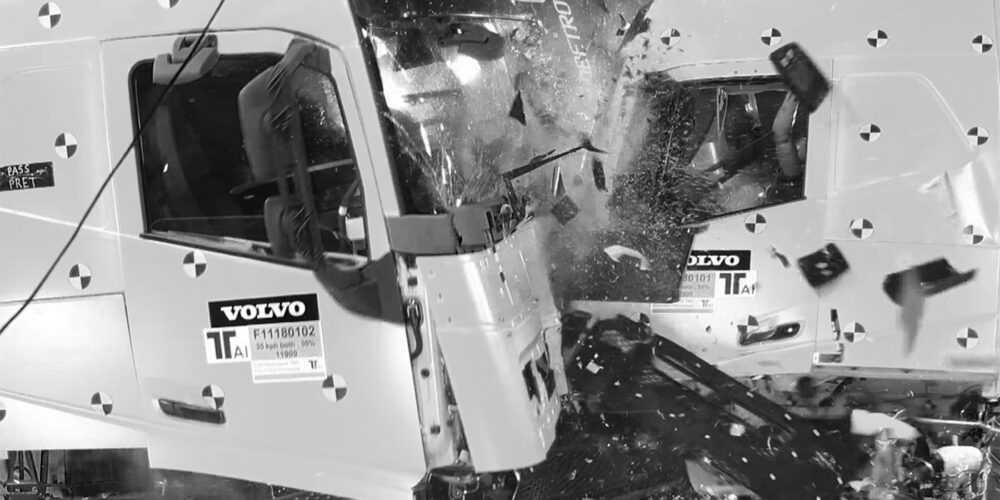While perhaps best known for Harvard University and the Massachusetts Institute of Technology, Cambridge, Massachusetts is a sizable city in its own right. Located across the Charles River from Boston, the densely populated, 6.3-square mile municipality that is home to more than 118,000 people is also the fourth largest city in the Commonwealth. Today, it is a leader in the adoption of clean fleet vehicles as well.
In February, those efforts and initiatives were documented and detailed in a Clean Fleet Policy aimed at accelerating the transition to fossil-free-fuel vehicles. The policy contains greenhouse gas (GHG) emission targets, acquisition guidelines, and a plan for the installation of charging stations and an electrical infrastructure. To support its implementation, the city established a Clean Fleet Committee comprised of Department of Public Works, Community Development Department, Police Department, and Fire Department representatives.
A guiding principle of the city’s Clean Fleet Policy aims to support the transition to fossil-fuel-free and net-zero emissions in municipal operations while ensuring that vehicles will be able to perform their necessary functions.
Overall, the goals include minimizing GHG emissions, increasing the average MPG of the city fleet, reducing mileage where operationally feasible, right-sizing the city fleet to eliminate unnecessary vehicles, and optimizing costs of operations and maintenance. Simultaneously, it calls for ensuring that there is shop capability, including properly outfitted facilities, and equipment and training for technicians.
The Clean Fleet Policy in Cambridge sets targets for GHG reduction. Using 2008 as a baseline, the city’s goal is to reduce emissions by as much as 25% by 2025, 55% by 2030, 75% by 2040, and 100% by 2050. On track to reach the first target, in 2022 citywide emissions from its municipal fleet were 18% lower than in 2008.
The Clean Fleet Policy in Cambridge requires city departments to acquire the lowest GHG emissions vehicles and heavy equipment that is commercially available and capable of performing necessary functions. Consideration of acquisition, maintenance and other costs is required. The policy also requires data-driven replacement strategies to prevent degradation of fleet performance and GHG emissions reduction over time.
There are also vehicle adoption targets in the city’s plan, including:
- 75% zero-emissions light-duty vehicles by June 30, 2030 (stretch target of 100%)
- 100% zero-emissions marked police cruisers by June 30, 2035
- 100% zero-emissions solid waste collection vehicles by June 30, 2035
The vehicles
To date, nearly 30% of the more than 370 vehicles operated by 14 city departments in Cambridge consist of battery electric (BEV), plug-in hybrid (PHEV), and hybrid electric models.
For light-duty vehicles under 8,500 lbs. GVWR, the city fleet already includes 21 BEV and four PHEV units. Since adopting the policy in February, the city has acquired six BEVs and leased 18 BEVs across seven departments, and all passenger vehicle purchases have been for BEV models. Additionally, there are now three BEVs in the Police Department’s fleet.
As part of its initial clean fleet efforts, Cambridge entered into an agreement with Enterprise Fleet Management to lease 18 all-electric vehicles for the Department of Public Works, Traffic, Parking and Transportation, Community Safety, and the City Manager’s and Mayor’s offices. Leasing in general is seen as a means of enabling the city to replace more vehicles in a year and, by shortening the replacement cycle to a five-year schedule, help reduce maintenance and repair costs.
The Cambridge Department of Public Works (DPW) operates the largest portion of the city’s fleet. Already in the fleet are Ford all-electric E-Transit cargo vans, Ford Escape PHEV SUVs, and Mustang Mach-E, Nissan Leaf, Hyundai IONIQ 5, and Hyundai Kona BEVs.
The DPW fleet also has International Truck models used for solid waste collection with Odyne electric power take-off (ePTO) systems. Capable of powering equipment on truck chassis, the modular electrification systems ensure continuous operation by automatically starting the engine if their battery becomes depleted. The engine then quickly recharges the ePTO battery and turns off again.
“Public Works continues to introduce advanced vehicle technologies into its fleet in order to reduce reliance on fossil fuels and transition to clean energy,” said Kathy Watkins, DPW Commissioner. “Our upcoming equipment budget has several electric or hybrid options for large trucks as well as small vehicles, including a Ford F-150 Lightning all-electric pickup.”
For its 18 solid waste collection vehicles, Cambridge DPW is awaiting delivery of three Mack LR Electric trucks equipped with rear-loader bodies. The Mack LR Electric has a standard 376 kWh total battery capacity, twin electric motors that produce 448 continuous horsepower and 4,051 lb./ft. of peak torque output from zero RPM. The trucks’ four NMC (Nickel Manganese Cobalt Oxide) lithium-ion batteries are charged through a 150 kW, SAE J1772-compliant charging system. Ballard Mack in Tewksbury, Massachusetts will offer service and support for the Cambridge electric refuse trucks.
To help fund its clean fleet vehicle initiatives, Cambridge is using available grants. The Mass. Department of Environmental Protection (MassDEP) under the Massachusetts Diesel Emissions Reduction Act (DERA) Electric Solicitation Grant program is helping partially fund the purchase of one Mack LR Electric solid waste collection truck that will replace an old diesel-powered model. The city is also pursuing a 2023 VW Solicitation grant administered by MassDEP for funding toward the purchase of all-electric rubbish packers.
Where applicable, Cambridge takes advantage of Massachusetts Electric Vehicle Incentive Program (MassEVIP) rebates for leasing or purchasing all-electric vehicles and PHEVs. Additionally, the city’s Fire Department received funding from an Earmark Hazmat Grant to replace two older internal combustion engine (ICE) vehicles with two fully electric Ford F-150 Lightnings.
“Managing snow operations is one of the biggest challenges the city DPW faces when adopting electric vehicle technology,” Watkins said. “The need to operate plows on a 24-hour basis, identify equipment with the appropriate power to plow snow and maintain vehicle warranties have all been critical considerations.
“As part of a 2022 Massachusetts Department of Energy Resources Green Communities Grant, we received funding to pilot an aftermarket retrofit of an all-electric Ford F-250 truck with a plow package,” Watkins continued. “Before fully committing to the expense of retrofitting an existing truck, however, in early 2024 we will lease a truck for one month to test it in snow operations. If proven successful, Cambridge would consider converting several gasoline trucks to all-electric alternatives.”
Charging and utilities
Electric vehicle charging infrastructure targets based on EV-port ratios are covered as well in the Clean Fleet Policy. Those include 30 charging ports by 2025, 90 by 2030, 150 in 2040 and 180 in 2050. Currently, there are 24 charging ports in operation at various fleet locations and 21 ports in the process of being deployed.
“Adding new Electrical Vehicle Supply Equipment, especially Direct Current Fast Charging, can pose a challenge,” Watkins related. “The city hired an engineering consultant to develop a comprehensive infrastructure assessment for expanding fleet charging. The scope of work includes electrical infrastructure assessment at seven sites where municipal fleets are located, design development for the selected sites, and cost estimation for budgeting purposes.”
Cambridge has also partnered with Eversource, its electric utility, for analytic and technical support as it transitions the municipal fleet from ICE to fully electric vehicles. The program will provide a customized fleet assessment that will include a cost and emissions analysis and other information necessary to help inform the city’s decision-making process. The work required to complete the report is primarily conducted by the utility’s vendor, PowerOptions, and is 100% funded by Eversource.
To help lower emissions from fossil fuels, all city departments in Cambridge are using a sustainable, regionally sourced biodiesel blend. Biodiesel reduces particulate matter (PM), carbon monoxide (CO) and hydrocarbons (HCs) emissions, reducing air pollutants and providing a healthier environment for residents and fleet mechanics.
Efficiency beyond electrification
Fleet management best practices are also in place as Cambridge addresses it clean fleet initiatives. An approach to strategic rightsizing determines if each new vehicle purchase meets current and anticipated needs, including eliminating underutilized vehicles. Major fleet user departments in the city are using Fleetio fleet management software to track vehicle usage, maintenance schedules, fuel or energy consumption, and costs, and make informed decisions that streamline operations.
DPW and the Cambridge Water Department have expanded their telematics program and are using Samsara software on vehicles and off-road equipment to monitor metrics such as MPG and vehicle location, among others.
“At DPW we have launched an anti-idling campaign to focus on reducing fuel consumption, GHG emissions and air pollution,” Watkins reported. “Meetings were held with all major DPW divisions and their staff, and weekly reports are provided to Division Supervisors, and idling alerts are set up to inform them when a vehicle idles over a certain period of time.”
In its Clean Fleet Policy, Cambridge also recognized that the transition to EVs and new technologies requires training for maintenance staff as well as drivers. As a result, DPW, Police and Fire Department technicians have received EV and hybrid safety, service, and repair training through NAPA Auto Parts. Police Department technicians also received High Voltage Vehicles, Components and Operation training from Ford.
“DPW mechanics will also receive training from Mack Trucks on all-electric refuse vehicles focused on safety, service and diagnostics of vehicles,” Watkins said. “Drivers are also being introduced to EV best practices for battery care, charging protocols, and the unique driving dynamics of electric vehicles. Proper training ensures optimal vehicle performance, maximizes battery life, and most importantly, ensures safety on the road.”
As required by the Clean Fleet Policy, the Cambridge Clean Fleet Committee has issued its first annual report documenting the progress being made toward achieving its sustainability targets. The committee meets monthly to support Clean Fleet Policy implementation and works closely with city departments to develop and support their plans aimed at meeting the policy’s goals.
While all the initiatives in the Clean Fleet Policy will take time to implement, it is already clear that the Cambridge, Massachusetts city fleet is destined for a fossil-fuel-free future.

